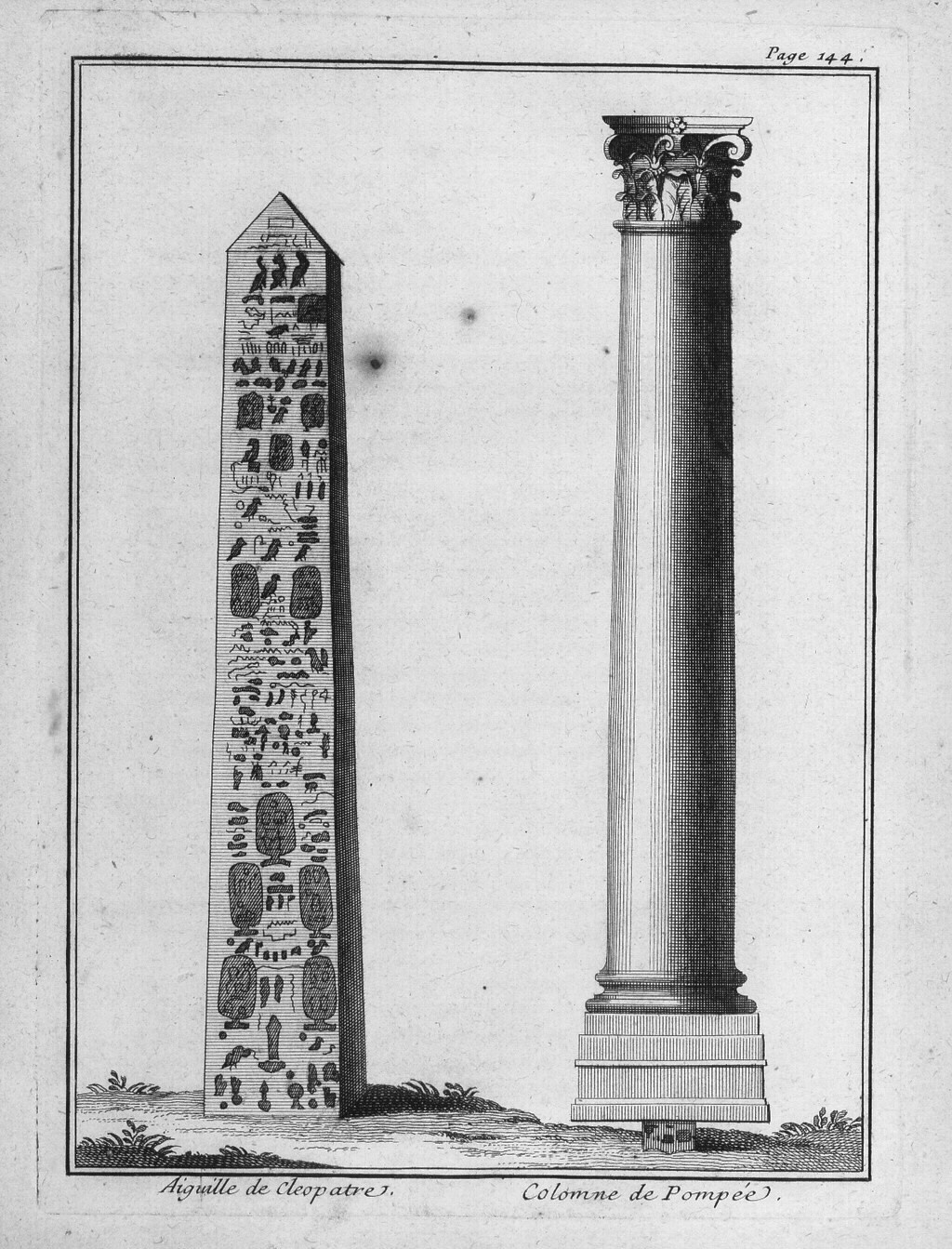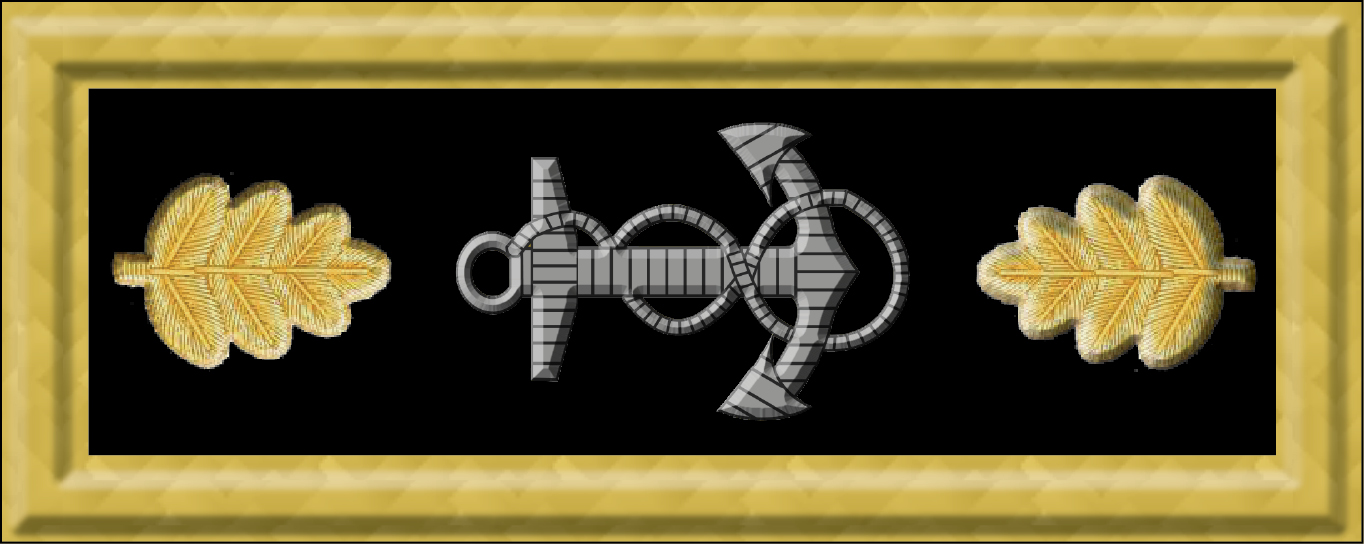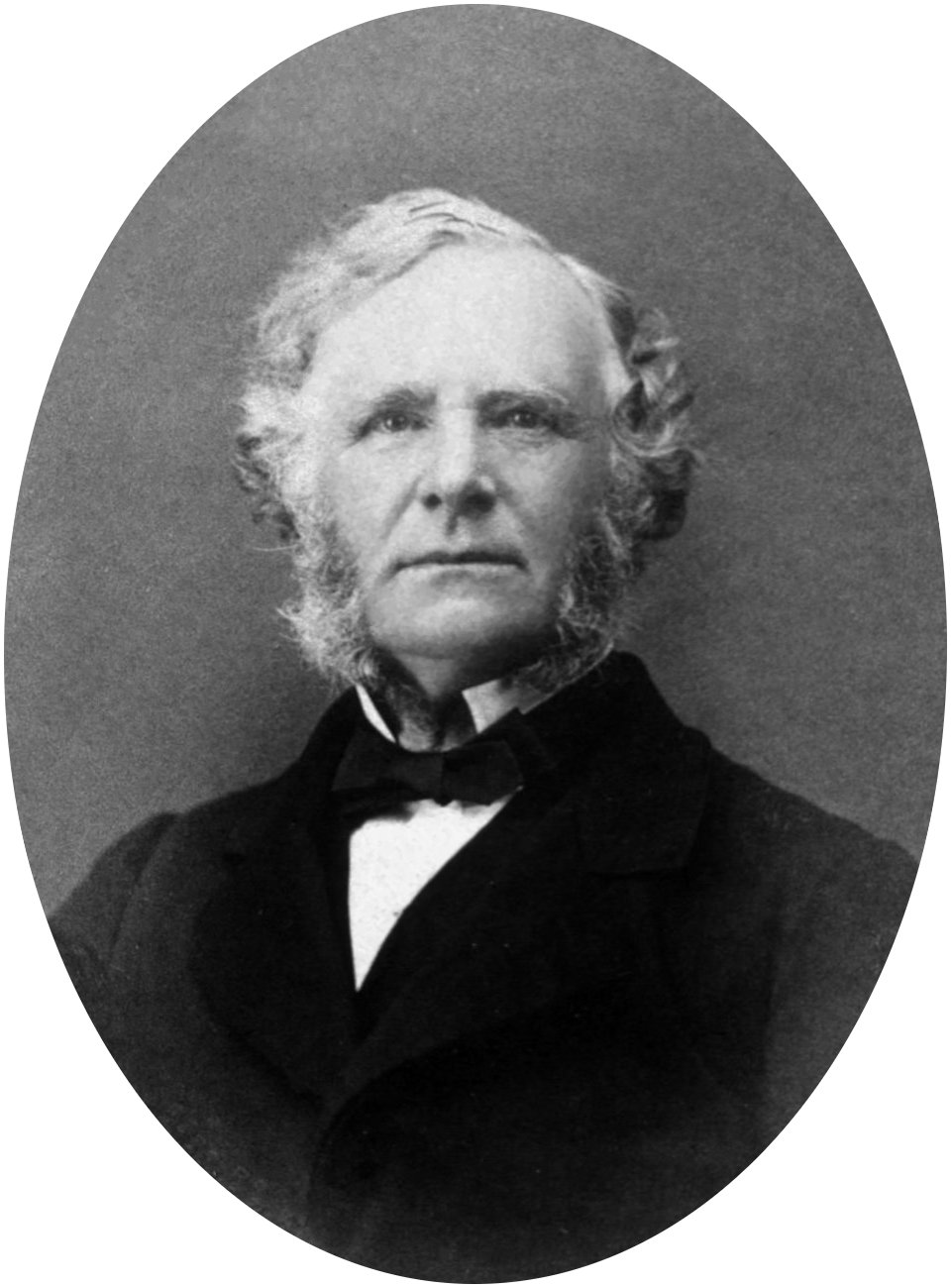|
Cleopatra's Needle
Cleopatra's Needles are a separated pair of ancient Egyptian obelisks now in London and New York City. The obelisks were originally made in Heliopolis (modern Cairo) during the New Kingdom period, inscribed by the 18th dynasty pharaoh Thutmose III and 19th dynasty pharaoh Ramesses II. They were later moved to the Caesareum of Alexandria, which had been conceived by Ptolemaic Queen Cleopatra VII, for whom the obelisks are named. They stood in Alexandria for almost two millennia until they were re-erected in London and New York City in 1877 and 1881 respectively. Together with Pompey's Pillar, they were described in the 1840s in David Roberts' '' Egypt and Nubia'' as " hemost striking monuments of ancient Alexandria". The removal of the obelisks from Egypt was presided over by Isma'il Pasha, who had greatly indebted the Khedivate of Egypt during its rapid modernization. The London needle was presented to Great Britain in 1819, but remained in Alexandria until 1877 when Sir Will ... [...More Info...] [...Related Items...] OR: [Wikipedia] [Google] [Baidu] |
Victoria Embankment
Victoria Embankment is part of the Thames Embankment, a road and river-walk along the north bank of the River Thames in London. It runs from the Palace of Westminster to Blackfriars Bridge in the City of London, and acts as a major thoroughfare for road traffic between the City of Westminster and the City of London It is noted for several memorials, such as the Battle of Britain Monument, permanently berthed retired vessels, such as HMS ''President'', and public gardens, including Victoria Embankment Gardens. History Earlier embankments The Victoria Embankment was preceded by many earlier works along the tidal Thames, including central London. Construction The Victoria Embankment was designed by civil engineer Francis Webb Sheilds, who submitted designs to a Royal Commission appointed in 1861. Following acceptance of the designs, construction was carried out by the Metropolitan Board of Works on the lines of his scheme. Construction, which started in 1865, was complet ... [...More Info...] [...Related Items...] OR: [Wikipedia] [Google] [Baidu] |
David Roberts (painter)
David Roberts (24 October 179625 November 1864) was a Scottish painter. He is especially known for ''The Holy Land, Syria, Idumea, Arabia, Egypt, and Nubia'', a prolific series of detailed lithograph prints of Egypt and the Near East that he produced from sketches he made during long tours of the region (1838–1840). These and his large oil paintings of similar subjects made him a prominent Orientalist painter. He was elected as a Royal Academician in 1841. Early life Apprenticed for seven years to a house painter and decorator named Gavin Beugo, his fellow apprentice being David Ramsay Hay, who became a lifelong friend. During this time he studied art in the evenings. After his apprenticeship was complete, Roberts's first paid job came in the summer of 1815, when he moved to Perth to serve as foreman for the redecoration of Scone Palace. Roberts returned in the spring of 1816 and lived with his parents while looking for work. His next job was to paint scenery for J ... [...More Info...] [...Related Items...] OR: [Wikipedia] [Google] [Baidu] |
Benoît De Maillet Description De L'Egypte - Cleopatra's Needle And Pompey's Pillar
Benoît () is a French male given name. It is less frequently spelled Benoist. The name comes from the Latin word , which means "the one who says the good", equivalent in meaning to Bénédicte or the English name Benedict. A female derivative of the name is Benoîte. The personal name Benoît is to be distinguished from Benoit as a family name, which is usually spelled without the circumflex accent. Early form of the name was spelled with an "s" (Benoist), but as with many words in the French language, the "s" was eventually replaced with a circumflex accent over the "i". Benoît in other languages * Aragonese: Benedet * Asturian: Benitu *Basque: Beñat * Breton: Beneat *Catalan : Benet * Croatian : Benedikt * Danish: Benedikt, Bendt *Czech: Benedikt, Beneš *Dutch: Benedictus, Benoot *English: Benedict *Finnish: Benediktus, Pentti * Galician : Bieito *German : Benedikt *Greek: Βενέδικτος (Venediktos) * Hungarian: Benedek *Irish: Bennett *Italian: Benedetto, Benito ... [...More Info...] [...Related Items...] OR: [Wikipedia] [Google] [Baidu] |
Saad Zaghloul
Saad Zaghloul ( ar, سعد زغلول / ; also ''Sa'd Zaghloul Pasha ibn Ibrahim'') (July 1859 – 23 August 1927) was an Egyptian revolutionary and statesman. He was the leader of Egypt's nationalist Wafd Party. He led a civil disobedience campaign with the goal of achieving independence for Egypt (and Sudan) from British rule. He played a key role in the Egyptian Revolution of 1919, as well as played a role in prompting the British Unilateral Declaration of Egyptian Independence in 1922. He served as Prime Minister of Egypt from 26 January 1924 to 24 November 1924. Education, activism and exile Zaghloul was born in Ibyana village in the Kafr el-Sheikh Governorate of Egypt's Nile Delta. For his post-secondary education, he attended Al-Azhar University and a French law school in Cairo. By working as a Europeanized lawyer, Zaghloul gained both wealth and status in a traditional framework of upward mobility. Despite this, Zaghloul's success can equally be attributed to his f ... [...More Info...] [...Related Items...] OR: [Wikipedia] [Google] [Baidu] |
Description De L'Égypte
The ''Description de l'Égypte'' ( en, Description of Egypt) was a series of publications, appearing first in 1809 and continuing until the final volume appeared in 1829, which aimed to comprehensively catalog all known aspects of ancient and modern Egypt as well as its natural history. It is the collaborative work of about 160 civilian scholars and scientists, known popularly as the savants, who accompanied Bonaparte's expedition to Egypt in 1798 to 1801 as part of the French Revolutionary Wars, as well as about 2000 artists and technicians, including 400 engravers, who would later compile it into a full work. At the time of its publication, it was the largest known published work in the world. The full title of the work is ''Description de l'Égypte, ou Recueil des observations et des recherches qui ont été faites en Égypte pendant l'expédition de l'armée française, publié par les orders de Sa Majesté l'Empereur Napoléon le Grand'' (English: ''Description of Egypt, ... [...More Info...] [...Related Items...] OR: [Wikipedia] [Google] [Baidu] |
Alexandria
Alexandria ( or ; ar, ٱلْإِسْكَنْدَرِيَّةُ ; grc-gre, Αλεξάνδρεια, Alexándria) is the second largest city in Egypt, and the largest city on the Mediterranean coast. Founded in by Alexander the Great, Alexandria grew rapidly and became a major centre of Hellenic civilisation, eventually replacing Memphis, in present-day Greater Cairo, as Egypt's capital. During the Hellenistic period, it was home to the Lighthouse of Alexandria, which ranked among the Seven Wonders of the Ancient World, as well as the storied Library of Alexandria. Today, the library is reincarnated in the disc-shaped, ultramodern Bibliotheca Alexandrina. Its 15th-century seafront Qaitbay Citadel is now a museum. Called the "Bride of the Mediterranean" by locals, Alexandria is a popular tourist destination and an important industrial centre due to its natural gas and oil pipelines from Suez. The city extends about along the northern coast of Egypt, and is the largest city ... [...More Info...] [...Related Items...] OR: [Wikipedia] [Google] [Baidu] |
Zahi Hawass
Zahi Abass Hawass ( ar, زاهي حواس; born May 28, 1947) is an Egyptian archaeologist, Egyptologist, and former Minister of State for Antiquities Affairs, serving twice. He has also worked at archaeological sites in the Nile Delta, the Western Desert, and the Upper Nile Valley. Early life Hawass was born in a small village near Damietta, Egypt. Although he originally dreamed of becoming an attorney, he obtained a Bachelor of Arts degree in Greek and Roman Archaeology from Alexandria University in 1967. In 1979, Hawass earned a diploma in Egyptology from Cairo University. He then worked at the Great Pyramids as an inspector—a combination of administrator and archaeologist. When he was 33 years old, Hawass was awarded a Fulbright Fellowship to attend the University of Pennsylvania in Philadelphia to study Egyptology, earning a Master of Arts degree in the subject and also one in Syro-Palestinian Archaeology in 1983, and his PhD in Egyptology in 1987 from the Graduate Gr ... [...More Info...] [...Related Items...] OR: [Wikipedia] [Google] [Baidu] |
Ministry Of Tourism And Antiquities (Egypt)
The Ministry of Tourism & Antiquities is the Egyptian government organization which serves to protect and preserve the heritage and ancient history of Egypt. In December 2019 it was merged into the Ministry of Tourism with Khaled al-Anani retaining his function. History It was formed from the Supreme Council of Antiquities in 2011 during the presidency of Hosni Mubarak to deal with the security and theft of Egyptian antiquities. Grave robbers have been looting ancient Egyptian tombs nearly continuously for well over 4 thousand years. The Ministry of Antiquities works to get the items restored back to Egypt, whenever possible. Over the years, thousands of stolen antiquities have made their way back to Egypt. For instance, in late 2016, the ministry recovered and repatriated two of four Islamic era lamps which had been stolen in 2015. In 2018, a carving in the shape of Osiris which had been hidden in furniture and shipped to Kuwait was repatriated to Egypt's Ministry of A ... [...More Info...] [...Related Items...] OR: [Wikipedia] [Google] [Baidu] |
University Of Notre Dame
The University of Notre Dame du Lac, known simply as Notre Dame ( ) or ND, is a private Catholic university, Catholic research university in Notre Dame, Indiana, outside the city of South Bend, Indiana, South Bend. French priest Edward Sorin founded the school in 1842. Campus of the University of Notre Dame, The main campus covers 1,261 acres (510 Hectare, ha) in a suburban setting and contains landmarks such as the Main Building (University of Notre Dame), Golden Dome, the Word of Life mural, ''Word of Life'' mural (commonly known as ''Touchdown Jesus''), Notre Dame Stadium, and the Basilica of the Sacred Heart (Notre Dame), Basilica. Originally for men, although some women earned degrees in 1918, the university began formally accepting undergraduate female students in 1972. Notre Dame has been recognized as one of the top universities in the United States. The university is organized into seven schools and colleges. Notre Dame's graduate program includes more than 50 master, d ... [...More Info...] [...Related Items...] OR: [Wikipedia] [Google] [Baidu] |
Henry Honychurch Gorringe
Henry Honychurch Gorringe (August 11, 1841 – July 7, 1885) was a United States naval officer who attained national acclaim for successfully completing the removal of Cleopatra's Needle from Alexandria, Egypt to Central Park in New York City. Early life Henry Honychurch Gorringe was born in the British colony of Barbados on August 11, 1841. His father served as rector to St. Michael's Cathedral. Young Henry came to the United States at a young age, entering the merchant marine. During the Civil War, he enlisted in the Union Navy, entering on July 13, 1862, with the rank of Mate, serving in the Mississippi Squadron. He received promotion to Acting Ensign on October 1, 1862, to Acting Master on September 26, 1863, to Acting Volunteer Lieutenant on April 27, 1864, and to Acting Volunteer Lieutenant Commander on July 10, 1865. Gorringe elected to stay in the Navy after the war, receiving a regular commission as a Lieutenant on March 12, 1868, and was promoted to Lieutenant Co ... [...More Info...] [...Related Items...] OR: [Wikipedia] [Google] [Baidu] |
United States Ambassador To Egypt
United may refer to: Places * United, Pennsylvania, an unincorporated community * United, West Virginia, an unincorporated community Arts and entertainment Films * ''United'' (2003 film), a Norwegian film * ''United'' (2011 film), a BBC Two film Literature * ''United!'' (novel), a 1973 children's novel by Michael Hardcastle Music * United (band), Japanese thrash metal band formed in 1981 Albums * ''United'' (Commodores album), 1986 * ''United'' (Dream Evil album), 2006 * ''United'' (Marvin Gaye and Tammi Terrell album), 1967 * ''United'' (Marian Gold album), 1996 * ''United'' (Phoenix album), 2000 * ''United'' (Woody Shaw album), 1981 Songs * "United" (Judas Priest song), 1980 * "United" (Prince Ital Joe and Marky Mark song), 1994 * "United" (Robbie Williams song), 2000 * "United", a song by Danish duo Nik & Jay featuring Lisa Rowe Television * ''United'' (TV series), a 1990 BBC Two documentary series * ''United!'', a soap opera that aired on BBC One from 1965-19 ... [...More Info...] [...Related Items...] OR: [Wikipedia] [Google] [Baidu] |
William James Erasmus Wilson
Sir William James Erasmus Wilson FRCS FRS (25 November 18097 August 1884), generally known as Sir Erasmus Wilson, was an English surgeon and dermatologist. Biography Wilson was born in London, studied at Dartford Grammar School before St Bartholomew's Hospital in London, and at the University of Aberdeen, and early in life became known as a skilful surgeon and dissector. It was his sympathy with the poor of London and a suggestion from Mr. Thomas Wakley of ''The Lancet'', of which he acted for a time as sub-editor, which first led him to take up skin diseases as a special study. The cases of scrofula, anaemia, and blood-poisoning which he saw made him set to work to alleviate the suffering of persons so afflicted, and he quickly established a reputation for treating this class of patients. It was said that he treated the rich by ordering them to give up luxuries; the poor by prescribing for them proper nourishment, which was often provided out of his own pocket. In the opini ... [...More Info...] [...Related Items...] OR: [Wikipedia] [Google] [Baidu] |



.jpg)




